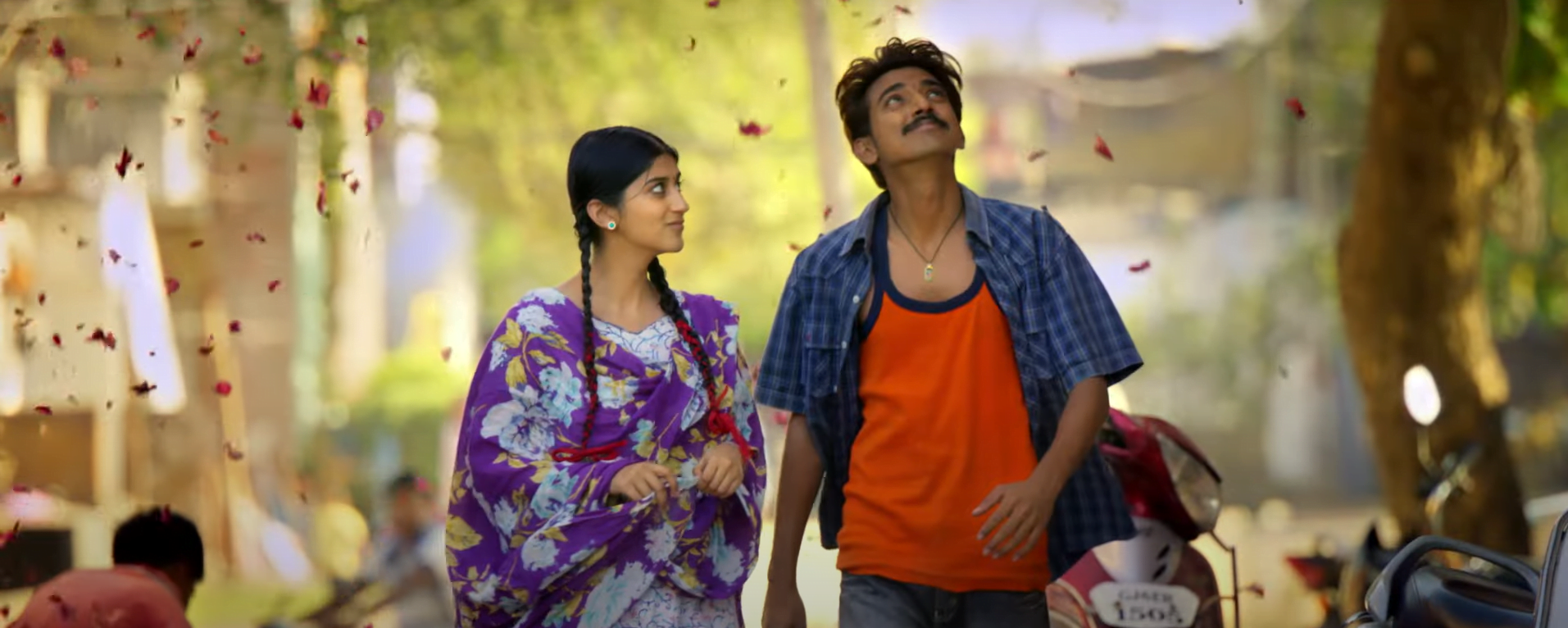Over centuries Indian society has witnessed love stories where some lovers failed while a few succeeded in inspiring others to take a leap of faith. These stories are either heartbreaking or pathbreaking and constantly challenge social barriers. Barriers such as caste, social status and economic differences, religion, and gender-based expectations. Indian culture is complex and these social issues affect the lives of numerous individuals. As products and consumers of this culture, one encounters these themes through various sources. Cinema is a highly influential medium that depicts these issues.
One such path-breaking film that challenges social norms is a 2017 released Gujarati language film titled ‘Karsandas Pay and Use,’ written and directed by Krishnadev Yagnik. This romantic comedy revolves around Tilok’s life, a janitor by profession and caretaker of a public toilet- Karsandas Pay and Use (કરસનદાસ પે એન્ડ યુઝ). Tilok falls in love with Jaya when she comes to use the public toilet and gradually, they develop a deep affection towards each other.
Jaya is a domestic worker and the eldest of the six daughters of Chinubha. Chinubha is an autorickshaw driver by profession and a resident of Shastri Nagar. Chinubha gets angry when he discovers Jaya’s relationship with Tilok. He resorts to violence and warns Tilok to stay away from Jaya: “Taari aukaat su chhe? Tu rayo jhaajharu (shauchalay) saaf karva vado. Tu ukerada ma padyo re, ane amara tya Shastri Nagar ma nai aavanu” (What is your status? You clean lavatory/toilets and peoples’ filth and dirt. You stay and live in filthy lavatory. Don’t you dare come in our Shastri Nagar).
Show, don’t tell your Caste
The director has cleverly and subtly marked the caste identities of characters with the technique show, don’t tell. None of their ‘surnames,’ reveal their caste. Characters don’t have any surnames, and it is only through their profession and dialogues that they are placed within the hierarchy. As the film progresses, it is interesting to navigate external social barriers and internal conditioning within their lives.
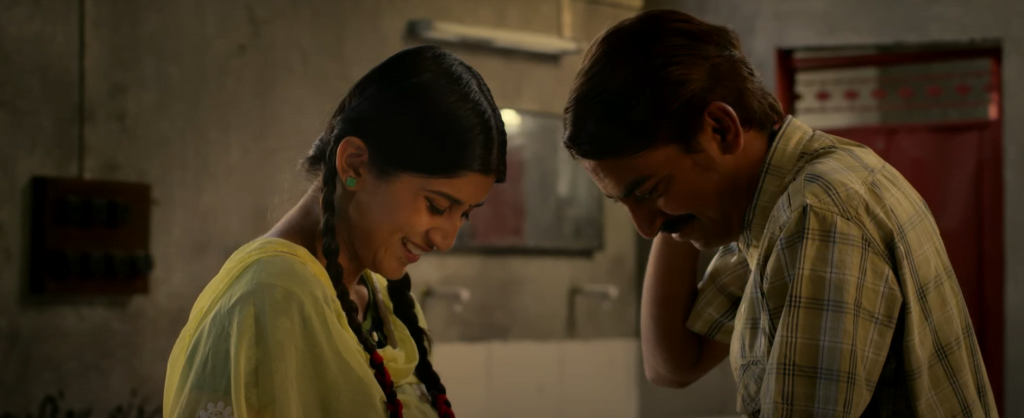
Being consumers of mainstream popular culture, people are conditioned to view caste through the lens of binary, i.e., upper or lower, pure or impure. Mainstream culture continues to shape the understanding of caste. Nevertheless, in this film, the directors’ ability to humorously deal with such a sensitive issue and yet seriously convey the message makes a viewer question the existing mainstream narrative on caste. e.g., using surnames to ‘show-off,’ or ‘hide,’ one’s identity.
Complexities of masculinity: many shades of men in Karsandas Pay And Use
Male characters portrayed by Yagnik depict many shades that are realistic yet debatable. There are several male characters in the film but here the main focus is on two major characters, i.e., Chinubha and Tilok.
Chinubha (Jaya’s father) is a patriarch, chauvinist, and sexist who desperately wants a son. His desperateness is visible when he impregnates his wife, even after the birth of the seventh girl child. His aggressively violent behaviour and extreme bigotry towards Tilok are visible in his actions when he publicly humiliates Tilok. He brutally beats him to an unconscious state because his male ego is hurt and he cannot stand the fact that a janitor loves his daughter and wants to marry her.
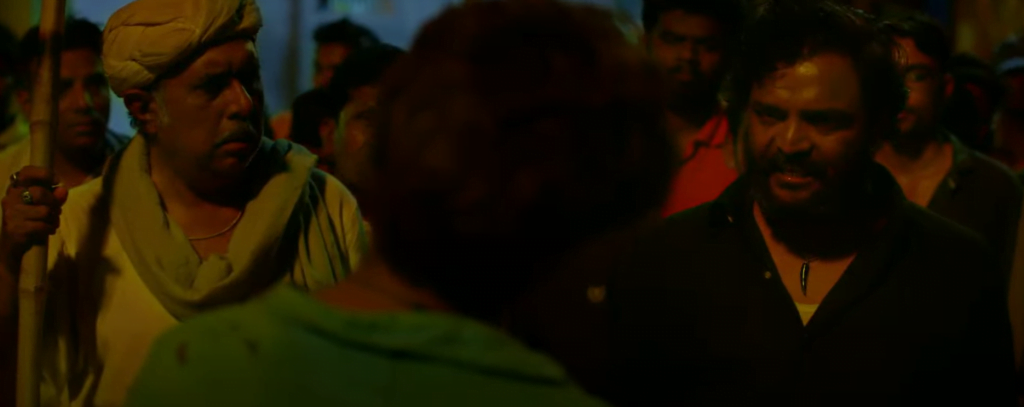
In the latter half of the Karsandas Pay And Use, surprisingly, the same Chinubha seeks forgiveness from Tilok when he realises his mistake and feels guilty. This moment of realisation and a happy ending is rarely seen in mainstream cinema. Perhaps the film could shed more light in depth on the process of realisation and what made Chinubha change his mind to happily accept Tilok and Jaya’s relationship.
It could be argued that such instances of inter-caste love and acceptance are rare in the real world, and if regional films are breaking conventions, they should be watched with a takeaway message without any criticism. However, it is equally important to dwell on the process of change in attitude and what brings about such changes, especially in the mindset (society) that shapes external reality. The director could have made his point stronger by shedding light on the process of change in mindset.
Interestingly, Tilok’s character is worth unpacking. He is emotional, bold, self-realistic, independent, and unapologetic all at once. He is a small-town man who can go to any extent to prove and fight for his love. This is evident when he challenges Jaya’s father to prove his status: “agar paisa thi maanas ni aukaat khabar pade che ne toh hu ek mahina ma tamne badhane maari aukaat batavish” (If money determines one’s status, then in a month’s time I will show you all my status). The events that unfold in Tilok’s pursuit of trying to prove his status are indeed a delight to watch.
Later, when he realises that his decision and action to prove himself are troublesome for others’ he immediately decides to repair the damage. This is demonstrated in his words: “Maro kaam safai karvanu chhe. Gandagi Karvanu nai.” (Cleaning is my job. Littering is not my job).
Whether or not the male character arc progressed is for viewers to decide. However, differentiating these male characters is challenging, as various instances reflect that they couldn’t divorce from core aspects of masculinity and subscribed to ideas that seemed favourable to them.
Jaya’s identity: question of agency
Karsandas Pay And Use, does not give Jaya enough space through dialogue, and apparently, she is unheard of even at home. Chinubha cares more about himself than his six daughters or his pregnant wife. Did Jaya really have the agency to process her feelings for Tilok, or was she merely responding to things happening to her?
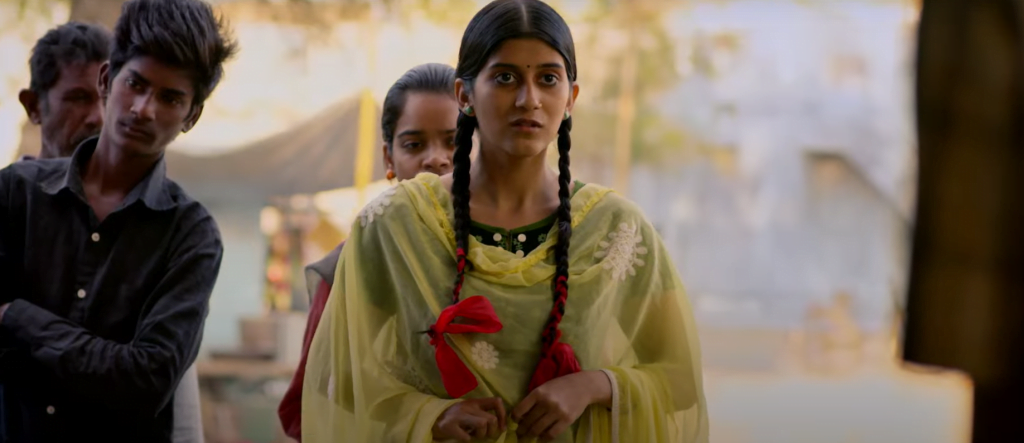
Regardless, two perspectives can help in understanding her character. First, being the daughter of an ignorant and sexist father, she may have been tempted to respond to Tilok, who not only adored her but was willing to fight against the world. Second, it is not clear if Jaya intentionally ignored his caste or whether she exercised her agency to choose Tilok against all the difficulties. It is on individual viewers to interpret her character.
Language – bridge or barrier?
The director has done an excellent job of illustrating how things lose their true meaning in the process of translation. Although this film features subtitles in English, the characters speak Gujarati, a dialect mostly spoken in the Saurashtra region.
Every dialogue is powerfully delivered and caters to a Gujarati audience that can understand its true meaning in the given context. However, when such films with powerful messages fail to reach a wider audience because of language limitations, their purpose is beaten.
Toilet – privacy or public necessity?
Does the Karsandas Pay And Use live up to its name? Although it is shot in a public bathroom, the camera does not show any real scenes of people using the restroom, which is quite the opposite of the recently released film 12th Fail. Ironically, the visibility of the ‘toilet,’ is only limited to the peripheral space, even though the entire film is based on the life of a janitor who is a caretaker.
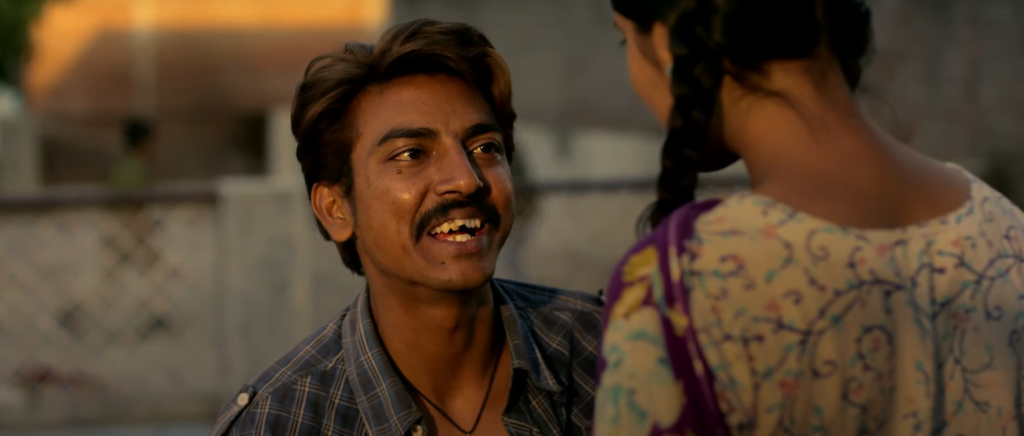
This place is home to Tilok and his brother (Sundar), and they unapologetically own it. The same place and profession are looked down upon in Indian society. The tension between choices- privacy (this place is home and a source of income for Tilok) over public necessity (it is for public use) is explored throughout the film.
Karsandas Pay And Use is far from perfect when critiqued from a technical filmmaking aspect or storyline point-of-view. Nonetheless, it has done much better in comparison to mainstream Hindi films. Current mainstream films dealing with social issues like inter-caste or interfaith love tend to depict extreme outcomes like honour killing, murder, suicide, or couples eloping to start a new life. Examples include Dhadak, NH10, and Ishaqzaade.
Unlike mainstream films, this Karsandas Pay And Use challenges stereotypical views on social issues. By the time the film reaches its end, viewers find themselves questioning their position within the spectrum. Would they dare to accept such a situation in real life? Can it be said that (some) regional films are actually driving society towards progress, or is their influence confined to the screen?
About the author(s)
Dimple has a keen interest in history, cinema, and cultural studies, which fuels her curiosity. With an exploratory attitude towards life, she enjoys engaging in thoughtful conversations over a warm cup of tea.
